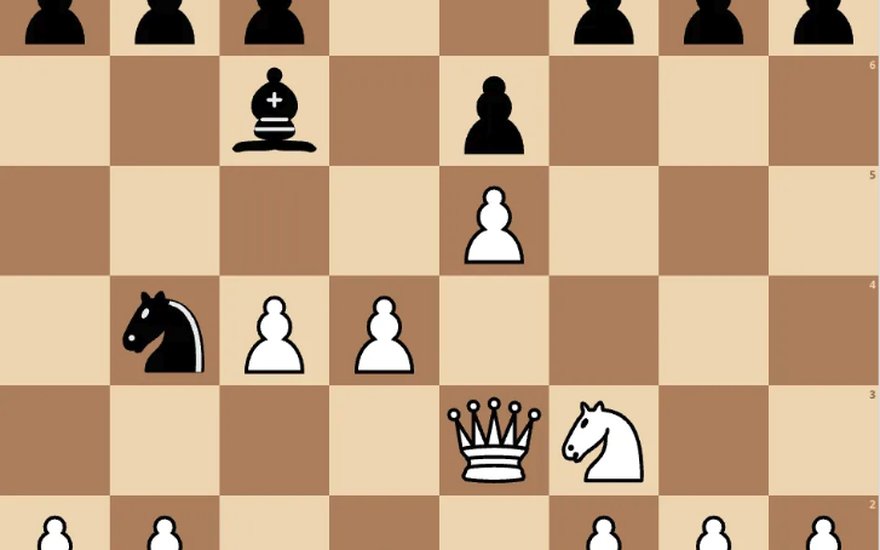
The Best Move In Chess
Why you should think less and castle moreWe should get rid of castling. Seriously, this move is just ridiculous. It’s the only time you get to move two pieces at once. It’s the only time the king can move two squares in a single move. It gets your king to safety and gets your rook closer to the action. Simply put, castling is way too good of a move.
Getting rid of castling would also make the game more interesting. Because castling is such a good move, the decision to castle is no decision at all: it’s a no-brainer. Remove castling and the decision of when and how to secure your king gets a lot more interesting. Now there’s not just one way to secure the king (okay, two if you count kingside and queenside castling), but many ways of “castling by hand.” But, since all of them are far less efficient than castling, it becomes a much closer call whether you want to spend your moves getting your king to safety, or improving your position in some other way.
So far I am largely rehashing arguments made in the DeepMind paper “Assessing Game Balance with AlphaZero”. They’re good arguments! But I am also a realist and I recognize this will never happen. Chess players still insist on delivering all moves in the world championship by horse-drawn carriage. They are not going to get rid of something as iconic as castling. So, as long as this outrageous move is still allowed, I suggest you take advantage of it.
There is a thread in chess instruction that looks askance at anything that appears too obvious, and insists that anything worth knowing must be complicated and confusing. This thread is exemplified by the following quote, sometimes attributed to Hans Berliner:
“Castle if you must, or because you want to, but not because you can!”
Sounds good, right? Very deep! But I’m reminded of also reminded of another quote about the benefits of acting last in poker by the player and coach Tommy Angelo (you don’t have to understand poker to get the gist of it):
“Acting last is like taking a drink of water. We don't have to understand why it's good for us to know that it is. And the benefits are unaffected by our understanding of them.”
You could argue that it would be better to develop a more nuanced understanding of the benefits of drinking water, how being properly hydrated improves focus, well-being, etc. And there are exceptions even to this. It is, in fact, possible to die from drinking too much water. But most people would be better served just carrying around a water bottle and taking a chug whenever they think of it.
Castling is the same way. Yes, like with anything in chess, there are exceptions where castling is a bad move. Yes, there is a lot more to be said about king safety, and ideally you eventually develop an understanding of all that. But for most people, castling when you can is a pretty good policy.
What does it even mean for a move to be too good? Isn’t castling good in some positions and bad in others, just like every other move? In a sense, yes, but castling is a good idea more often than other moves, because it does more for you. It simultaneously gets your king to safety and gets your rook closer to the action. That’s far more than any move has a right to do.
Imagine if castling was not currently a rule and someone proposed it. Some jerk would say, “That’s stupid. That move is way too good. People will just do it every game.” And that guy would be right.
Castling also touches on an irritating habit of chess authors: emphasizing the bizarre over the usual. In Winning Chess Strategy by Yasser Seirawan and Jeremy Silman, there are two examples of king walks in the middlegame, and none of castling. After one sentence acknowledging that “you will usually want to castle quickly” they jump right into this example from a game between Seirawan and Timman:
Here the authors shower praise on Seirawan’s choice of 1. Kd2. This is a bizarre move, walking the king into the center of the board in the middlegame, the sort of thing that would almost never work. And indeed, the engine refutes the idea quite easily.
- Kd2 Bxf3! 2. gxf3 Qd7!
Black gets ready to – say it with me now – castle queenside, applying more pressure to the d4 pawn. White stands worse and needs to find several precise moves to avoid losing immediately.
Notice that Black’s moves are simple and easy to understand. First an exchange, doubling White’s pawns and removing a defender of d4; then rapid development, targeting the weak point in White’s position. Many novice players imagine that getting to a high level involves adopting a sort of bizarro chess, where all the usual rules are reversed, but more often it’s just doing the normal stuff with more precision.
Likewise, White’s best move in the starting position would be the straightforward 1. Bd3, developing a piece, guarding against Nc2+, and getting ready to – yep – castle. After this move White doesn’t have an advantage, but can at least hope to get out of the opening in one piece.
What’s even more interesting is that when I searched for the game Seirawan-Timman where this position occurred, I couldn’t find it. It turns out this wasn’t the position from the game! The real position was with the knight on g1, not f3.
Here Kd2 actually is the best move, although in this case it’s hard to even find another candidate that would stop the threat of Nc2+. 1. Bd3 would allow 1... Bxg2, and 1. Qc3 would allow the standard trick 1... Qxd4 2. Qxd4 Nc2+ (not to mention 1... Be4 which appears to be even stronger). This shows that as always there are exceptions, but the principle the authors were trying to illustrate is so fragile they even got mixed up with their own example.
Here’s an example you would almost never find in a strategy book. In this position my student played Bf5. Most authors would consider an example like this too obvious to mention, because there’s nothing especially interesting about it. Castling is legal, it’s a good move in exactly the way that it usually is, and you should do it. Yet I see players up to 2000 and higher getting into trouble because they fail to castle in positions like this. To most players, this isn’t that obvious.
Bf5 is not a terrible move by any means. It develops a bishop to a decent square. But in a position like this, you should just castle. The reason is that in the opening, you want to play the moves you’re most sure of first.
Are we going to leave our king in the center? No, with the half-open e-file that doesn’t make any sense. Are we going to castle queenside? No, all our queenside pieces are in the way, and there’s no reason to try to go queenside anyway. That means we know we’re going to castle kingside, so we should do it immediately. That gives us the additional option of bringing a rook to the e-file, and prevents a scenario where the center opens up unexpectedly and suddenly we don’t have time to castle (believe me, this happens!).
In contrast, it’s not yet clear how we want to develop the queenside pieces. The light-squared bishop could go to f5, g4, or e6. By waiting on the moves we’re not sure about, we get to see what White does and get more information before having to make a decision.
Perhaps more importantly, when I see a move like Bf5, it suggests to me that on some level the player doesn’t want to castle. They will castle only after they’ve run out of other ideas. But the whole point of this post is that castling is an unfairly good move. You should be excited about castling.
I’ll leave you with another quote, one that I think will be more helpful for most players:
“Castle early and often.”
If you liked this check out my newsletter where I write weekly posts about chess, learning, and data: https://zwischenzug.substack.com/




